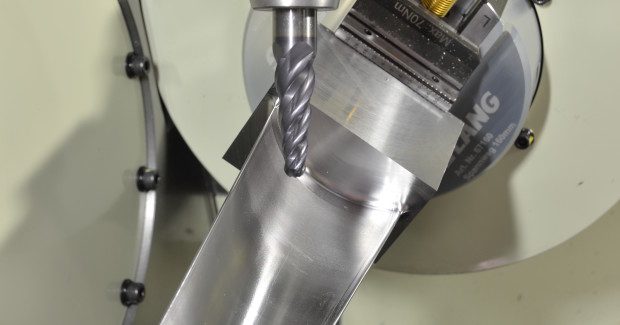2014 Metal Cutting Outlook: Automated Flow
As business increases throughout this sector, it’s not about speed or piecemeal production any longer. Scott Walker of Mitsui Seiki explains why it’s really about transitioning into automated “flow” environments that integrate specific machine tools for specific applications to achieve accurate, consistently good end products.
Posted: January 9, 2014
Business is stable and increasing, at least in our predominant sectors, one of which is aerospace, which means growth opportunities in a variety of aero structures, including landing gear and all of the components that make up the new jet engine programs, such as cold and hot stage compressor parts, shrouds, and exhaust system parts, and more.
Right now, the major advancements leading technology development in the aerospace sector are primarily centered around materials. Of course the titanium grades, 5553, 6AL4, 10-2-3, etc. have been around for a while and people are starting to understand how they need to be cut: high torque motors, low frequency machining, large spindle taper interface and so on.
The next large volume material we are seeing for jet engine blade components is titanium-aluminite – Ti-Al. It’s lightweight, yet strong, tough, heat resistant. It’s coming into the market strongly now with the new jet engine requirements.
In addition to the challenging materials, the part designs themselves are complex. To compete, the suppliers of these components need to set up their manufacturing systems to operate like an engine block line in an automotive plant where parts must be consistently well made in a highly predictable environment. This type of processing trims out the work-in-process in the supply chain so that perfect parts are continuously fed to the OEM assembly facilities when they need them and how they need them.
Scott Walker, the president of Mitsui Seiki USA, comments on triple nickel titanium machining.
It’s not about speed or piecemeal production any longer. It’s about transitioning into automated “flow” type of environments that achieve accurate, consistently good end products. To mill, drill, and grind these new materials, along with the overall complexity of the part designs, machine tool OEMs must design specific machines for specific applications, which fits into the trend of providing predictable results in a narrow band of applications – driven by the materials.
Machine tool OEMs continue to design and build automated pallet FMS systems with ever more intelligence built-in so that the cutting edges, vibration, mechanics, thermal effects – virtually all the aspects that impact component accuracy and whole system consistency – are made “smart” so that they can be continuously monitored and managed.
The old intelligence was human skill – a feel, a sense, and an ability to know what needed to be done. Those sorts of skills are going away and being replaced by computer skills, along with the need to automate to compete on the world stage. The automotive industry has done this very well. Commercial aerospace has an ambitious production schedule right now and needs to follow suit with the same manufacturing philosophy as automotive.
Financing is a critical issue; it’s difficult for shops to capitalize on their own, and getting the support from the financial community is difficult right now. A second concern is the cost of fuel. All of the growth in aerospace has been driven by the need to reduce fuel consumption.
The U.S. is poising to contribute a lot of fossil fuel materials into mining, which will bring the cost down, however if there is even a little hiccup along the fuel food chain and the costs skyrocket, that will crush the aerospace industry.
A third concern is capacity and capability in the aerospace supply chain. Special application machine tools, such as the large trunnion styles integrated with FMS components, are required for these aerospace contracts we’ve been discussing. Shops will miss the opportunity to compete if they don’t have them or if they decide too late to order them as machine tool companies backlogs grow due to increased demand.
Shops should do their research about machine tools. OEMs may all use the same words when they sell, but the way in which the machines are built is very, very different. Shops should also look into the builders’ support organizations. “System down” does not contribute to that need for a consistent, predictable process whatsoever.
At times it seems our industry has talked ad nausea about the desperate need to attract young people into manufacturing. Our company is hiring several people in their late 20s and early 30s in sales, engineering, and service. The amount of material they need to absorb is extremely intense, and they need to do it quickly to get up to speed because the old guard is retiring daily.
As such, I’d like to call on our readers – many of you are small shops and it’s difficult, I understand – but please hire at least one promising young person in 2014. Invest in the training if necessary and mentor them. Our industry and the American economy depends on it.












